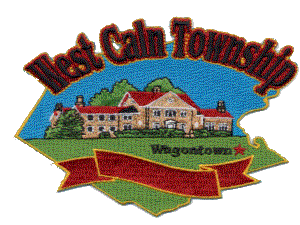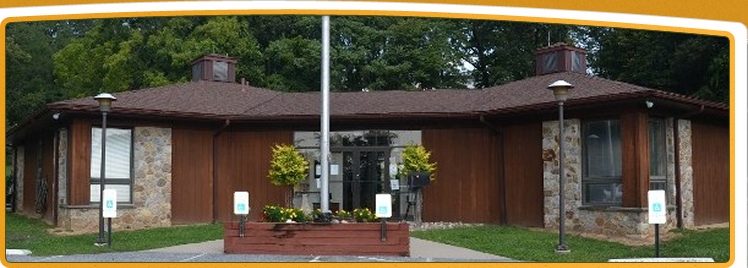West Caln Agricultural Security Area
Amendments to the Agricultural Security Area Law (Act 43 of 1981) were signed December 14, 1988 and will go into effect in mid February 1989. The amendments modify and clarify provisions in the existing law, add a new benefit for participants and, most significantly, provide the mechanism for purchasing agricultural conservation easements from farmers in Agricultural Security Areas. The conservation easements (also referred to as "development rights") program was authorized by Pennsylvania's voters in November 1987 Agricultural Security Areas are a tool for strengthening and protecting agriculture in Pennsylvania. Farm landowners, working together, initiate the process of establishing such Areas in which agriculture is the primary activity. Participating farmers are entitled to special consideration from local and state government agencies, thus encouraging the continuing use of the land for productive agricultural purposes.
Key Features
- initiated by petition of farm landowners
- minimum area of 500 total acres
- may include non-adjacent farmland parcels
- township or borough level program
- seven year lifetime, then reviewed
- parcels may be added during seven year period
- participation by landowners is voluntary
- use of land not restricted (not a land use law)
- participants receive special consideration regarding: local ordinance effect on farming activities and nuisances; state agency rules and regulations; review of farmland condemnation by state and local government agencies; review of state-funded development projects
- participants eligible to sell agricultural conservation easements
Creating Agricultural Security Areas
Setting up an Agricultural Security Area is a simple process with five basic steps.
- The process of establishing an Agricultural Security Area is initiated by petition of owners of productive farmland totaling at least 500 acres. The land to be included must have soils conducive to agriculture and be used for the production of crops, livestock and livestock products. The petition is submitted to the local government unit with a description and boundaries of the proposed Area. Non-adjacent parcels of at least 10 acres may be included. A proposed Area located in more than one government unit is submitted for approval to each governing body.
- The governing body gives public notice of the proposal to create an Area. Basic information is printed in a newspaper and posted in five locations, with an invitation for objections and modifications to be submitted to the governing body and planning commission within 15 days.
- After the 15 day comment period the proposal, with objections and modifications, is referred to the local planning commission and a specially formed Agricultural Security Area Advisory Committee. The Advisory Committee is made up of three active local farmers, one citizen and a member of the local governing body. Both groups have up to 45 days to review the proposal and make recommendations to the governing body.
- A public hearing on the proposed area must be held by the governing body. Modifications to the Area may be made up to 7 days before the public hearing is advertised.
- Following a public hearing the governing body may decide to adopt or reject the proposal, or any modifications to it. The Area, if created, has a 7 year lifetime after which it is reviewed. The governing body must act within 180 days from the date the petition was submitted. If the governing body fails to decide in 180 days, the Agricultural Security Area is automatically adopted as originally petitioned. Within 10 days of its creation a description of the Area must be filed with the recorder of deeds and both the local and county planning commission.
Benefits of Agricultural Security Areas
When an Agricultural Security Area is formed it entitles the participating landowners to special consideration from the local governing body and state government agencies. The local government unit may not impose ordinances that unreasonably restrict farm structures or practices within the Area, nor may normal farming operations and practices be deemed "nuisances" in a nuisance ordinance. State government agencies must modify their administrative regulations and procedures to encourage viable farming in Agricultural Security Areas.
Land condemnations within Agricultural Security Areas, proposed by Commonwealth or local agencies (such as municipal authorities, school boards and governing bodies), must be reviewed and approved before land may be condemned. In addition, all state-funded development projects which might affect an established Area must be reviewed. Modifications may be proposed to ensure the integrity of the Agricultural Security Area.
New Features
It is now possible to add farmland to an established Agricultural Security Area during its seven year lifetime. Previously, new land could only be added at the seventh year review. Any proposal to add land must follow the procedures outlined for the establishment of an Area.
If, during the seven year life of an Area, 10 percent of the land diverted to non agricultural use, the governing body may call for an interim review. The Advisory Committee and local and county planning commissions make recommendations to the governing body who may decide to modify or terminate the Area.
The mechanism and basic procedures for a statewide program to purchase agricultural conservation easements from landowners in Agricultural Security Areas is set up. Agricultural conservation easements are similar to the commonly known "development rights," but they actually are the right to prevent development. Farmers voluntarily willing to sell conservation easements would be compensated for the development value of the land without having to take it out of agricultural production. A $100 million bond issue, approved in November 1987, will fund the program.
A newly created State Agricultural Land Preservation Board will oversee the program, the county agricultural land preservation boards will administer local conservation easement purchases.
Q & A
What is an agricultural Security Area?
Act 43 of 1981 allows any owner or owners of land used for agricultural production to submit a petition to their township supervisor for creation of agricultural security area - an "ag area". Five hundred or more acres of viable agricultural land must be involved. Approval authority for the "ag area" petition is in the hands of the township supervisors. If the petition is approved, participating landowners agree to keep their land in agriculture in return for certain benefits that the township will give. The term of an ag area is seven years followed by a re-certification process.
Will I be penalized if I change land uses while in an agricultural security area?
Participation in an ag area is purely voluntary. There are no penalty provisions for an individual who changes land use while in an ag area.
Is the creation of an ag area the same as zoning?
An ag area designation is not zoning.
Can an ag area be in more than one township?
Yes, but approval must be given from each township. If one of the township involved disapproves the petition, the acreage in that township must be subtracted from the total acreage. If this lowers the acreage below the prescribed 500 acres, then the petition must be withdrawn.
Will I have to have my land surveyed if I join an ag area?
No survey of parcels is required by Act 43 except when an individual is putting a portion and not his entire acreage into an ag area.
Can forest land be in an ag area?
Yes, forest land is included under the definition of "crops, livestock and livestock products" in Act 43.
What are the benefits of being in an ag area?
Under Act 43, local governments are not to pass ordinances that unreasonably restrict farm structures or practices. It prevents local governments from defining or prohibiting as a "public nuisance" agriculture activities and operations conducted within the security area. While benefiting from participation in an ag area, a farm operator must nonetheless engage only in normal acceptable farming practices. The act does not take away a local government's right to control nuisances when they bear directly on public health and safety. The act also protects farm operators by discouraging condemnation of agricultural land through eminent domain. Participants receive the advantage of having additional reviews of the proposed condemnation. Land in ag areas cannot be used for low level radioactive waste or hazardous waste sites.
Can I participate in the ag area even if my land does not connect with the proposed area's boundaries?
Non-connecting parcels are permitted in the ag area designation. Non-connecting areas can be made up of one or more parcels, and must be at least ten acres in size.
Are there any restrictions on land use within an ag area?
There are no restrictions placed on land use as a result of being in an ag area. A landowner regains the right to subdivide, sell, or change the use of his land regardless of his participation in an ag area, However, landowners are not exempt from laws such as zoning ordinances, deed restrictions, or current state environmental laws.
Is the ag area designation permanent?
The agricultural security area designation should be reviewed every seven years after it's establishment, or it continues as it exists. Also, the areas may be reviewed at any time if 10% of the land is converted to non-agricultural uses. The review process includes the same steps as the initial designation process: a report from the ASAAC, the local planning commission, and a public hearing. Additionally, a report must be requested from the county planning commission. The public hearing is arranged the same as the first hearing, except that it is held in a 60-day period starting 180 days before the end of every seven years.
Establishment
An Agricultural Security Area was established as defined in Act 43, the Pennsylvania Agricultural Area Security Law and adopted by the Board of Supervisors on October 14, 1991.
Agricultural Security Area Application
A helpful link is the Chester County Agricultural Development Council's Dairy Data Sheet. It is the first of the data sheets we are producing about key segments of our county's important agriculture.
http://dsf.chesco.org/agdev/site/default.asp

